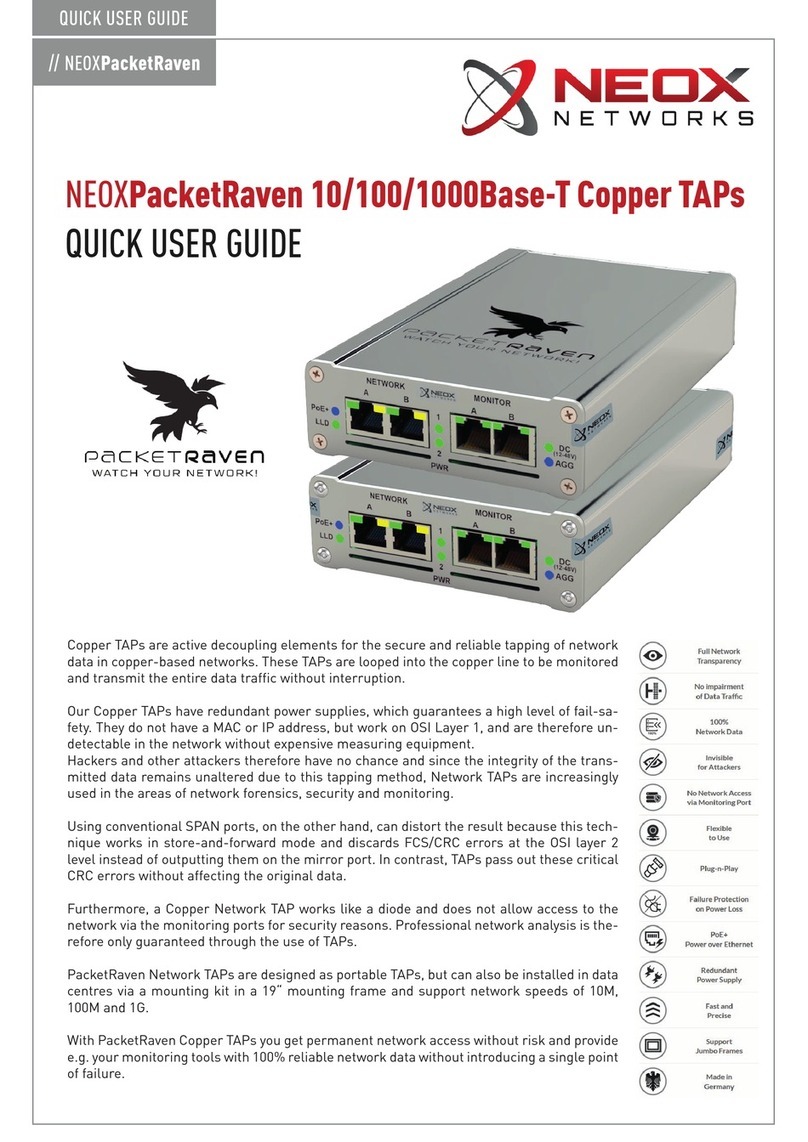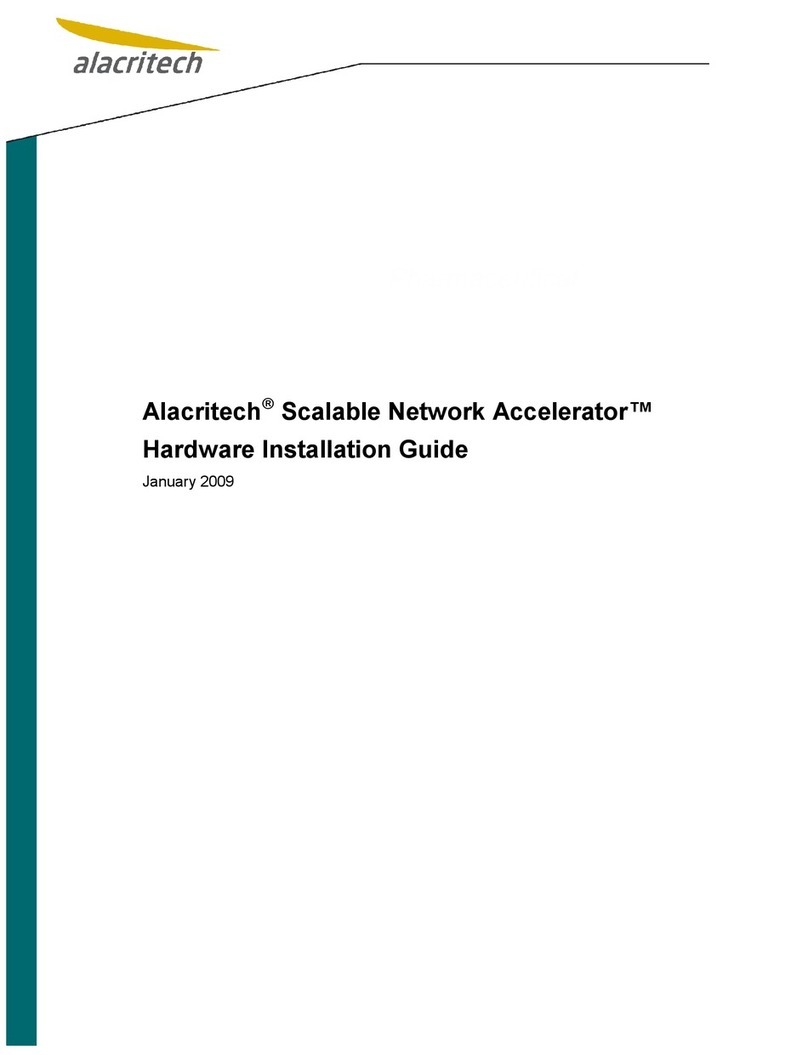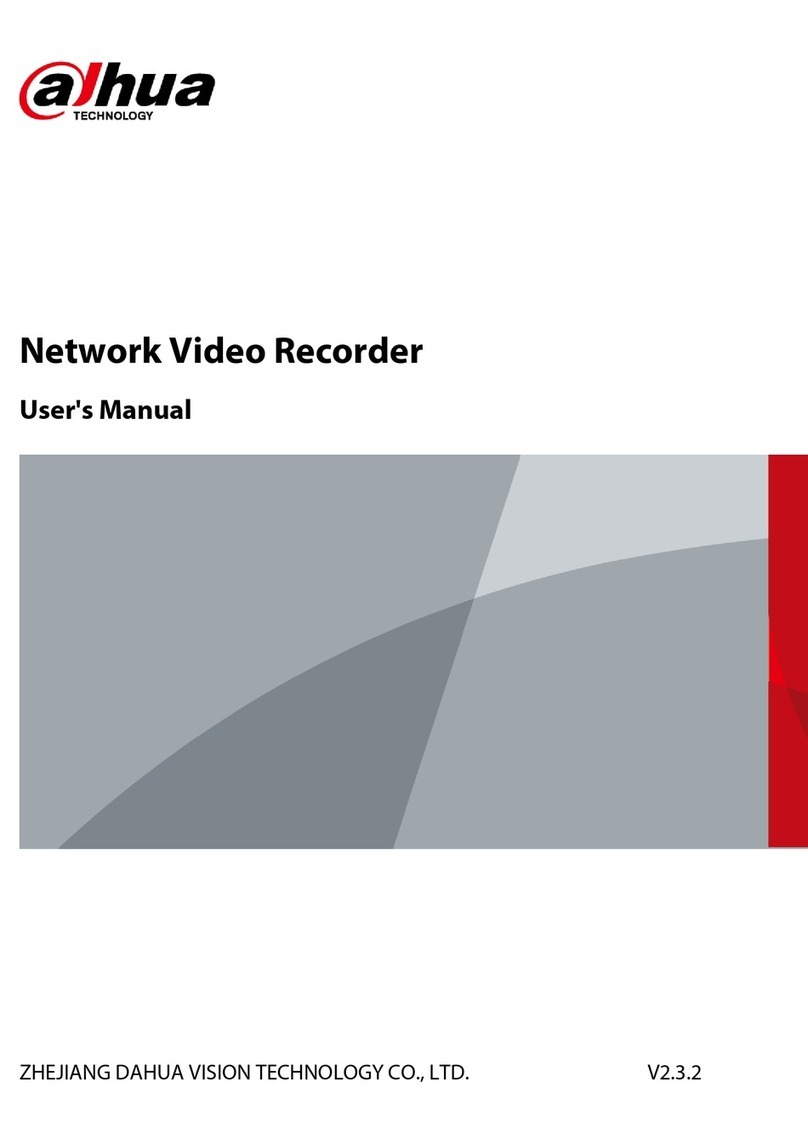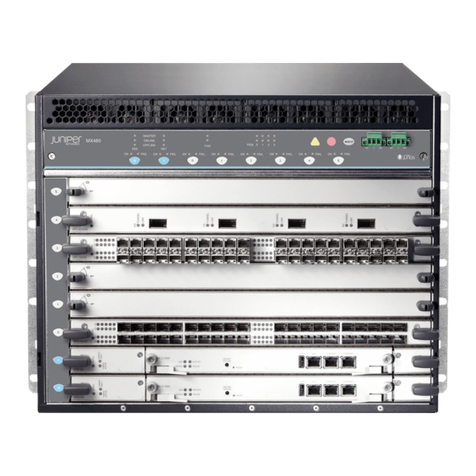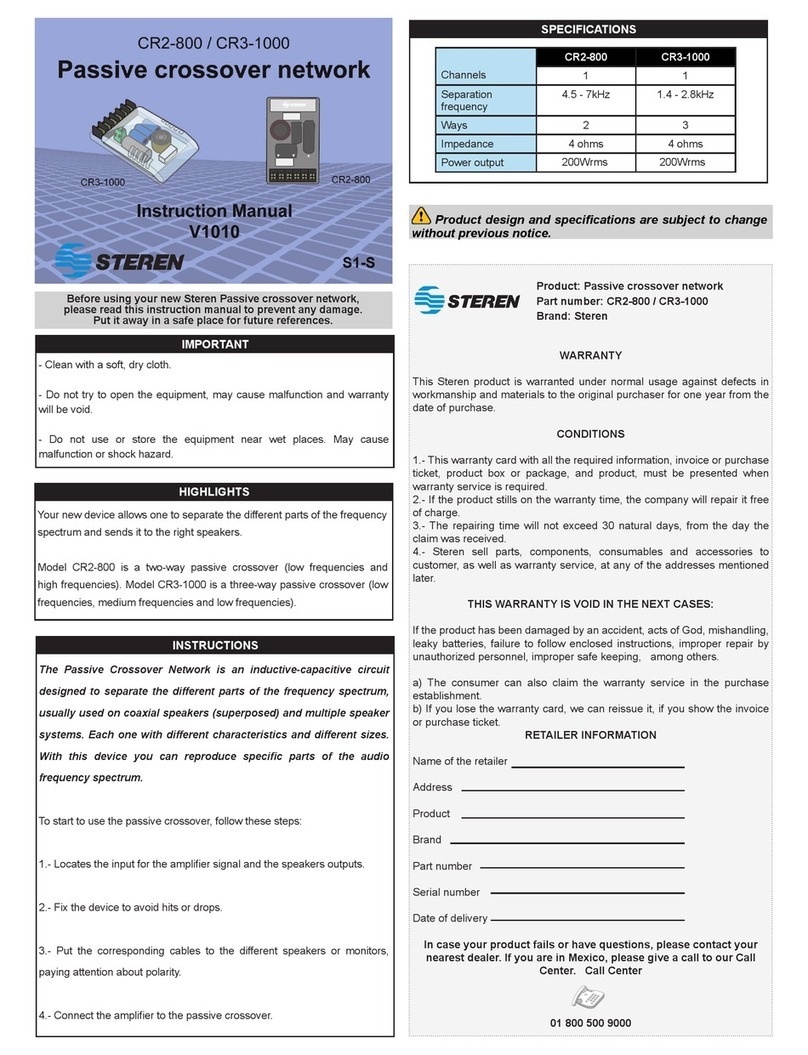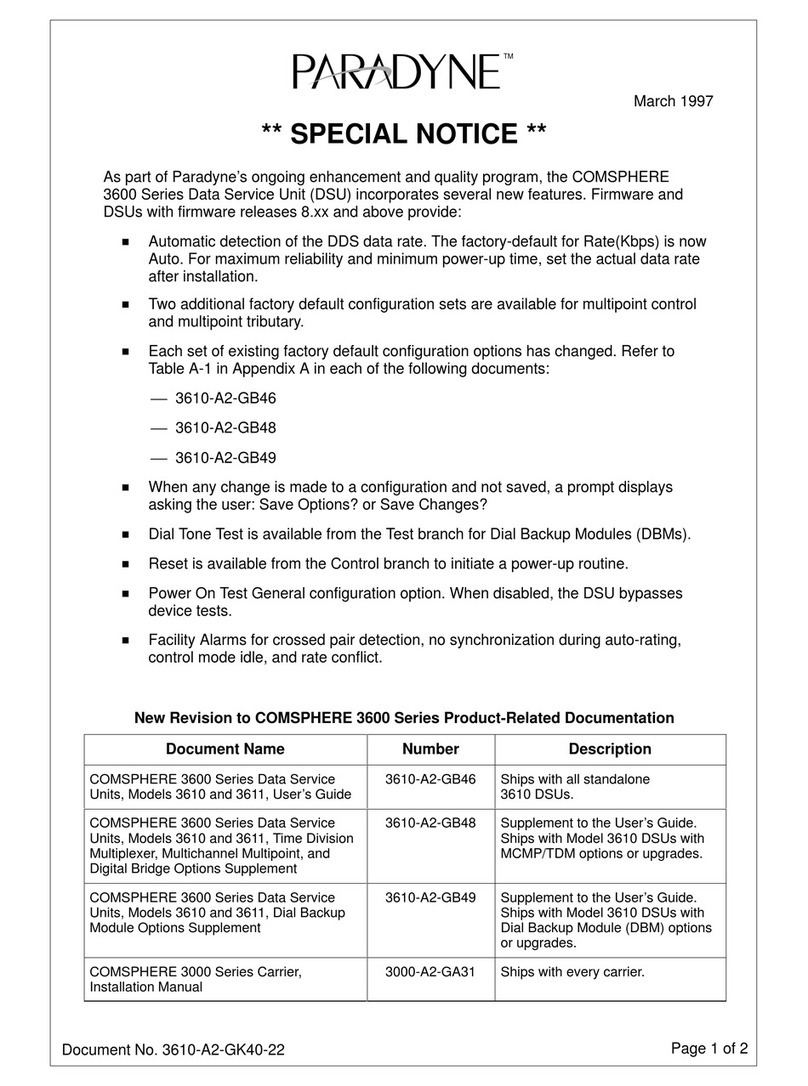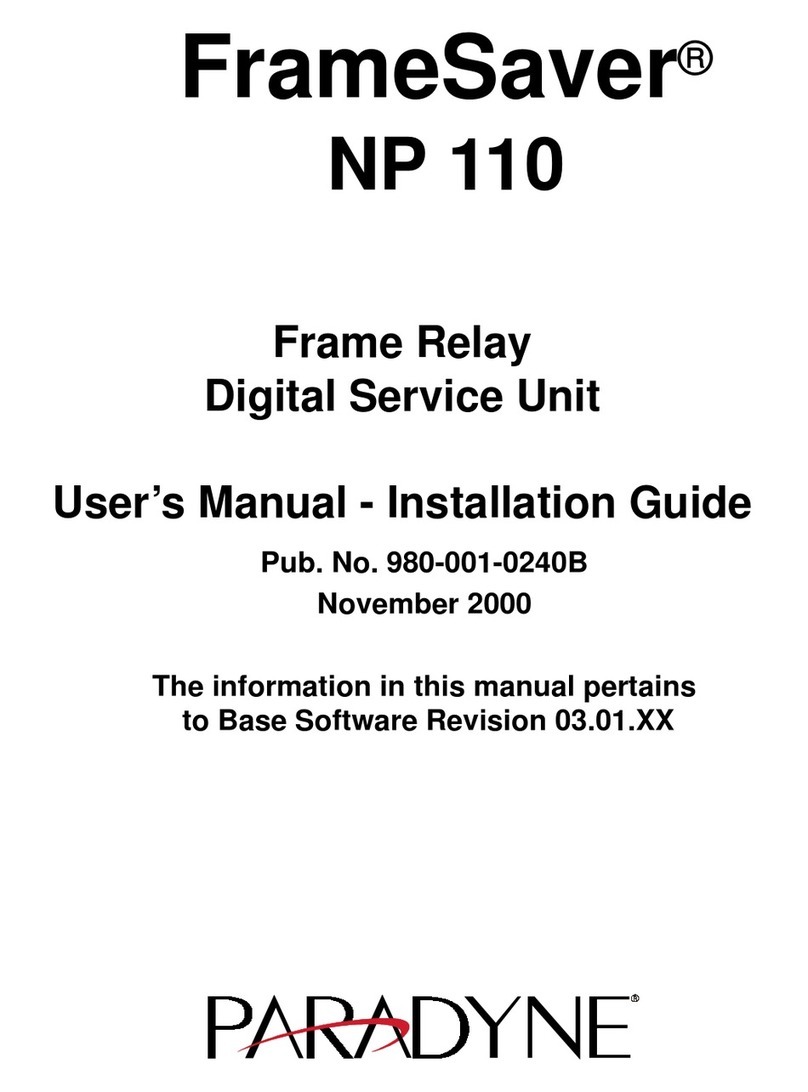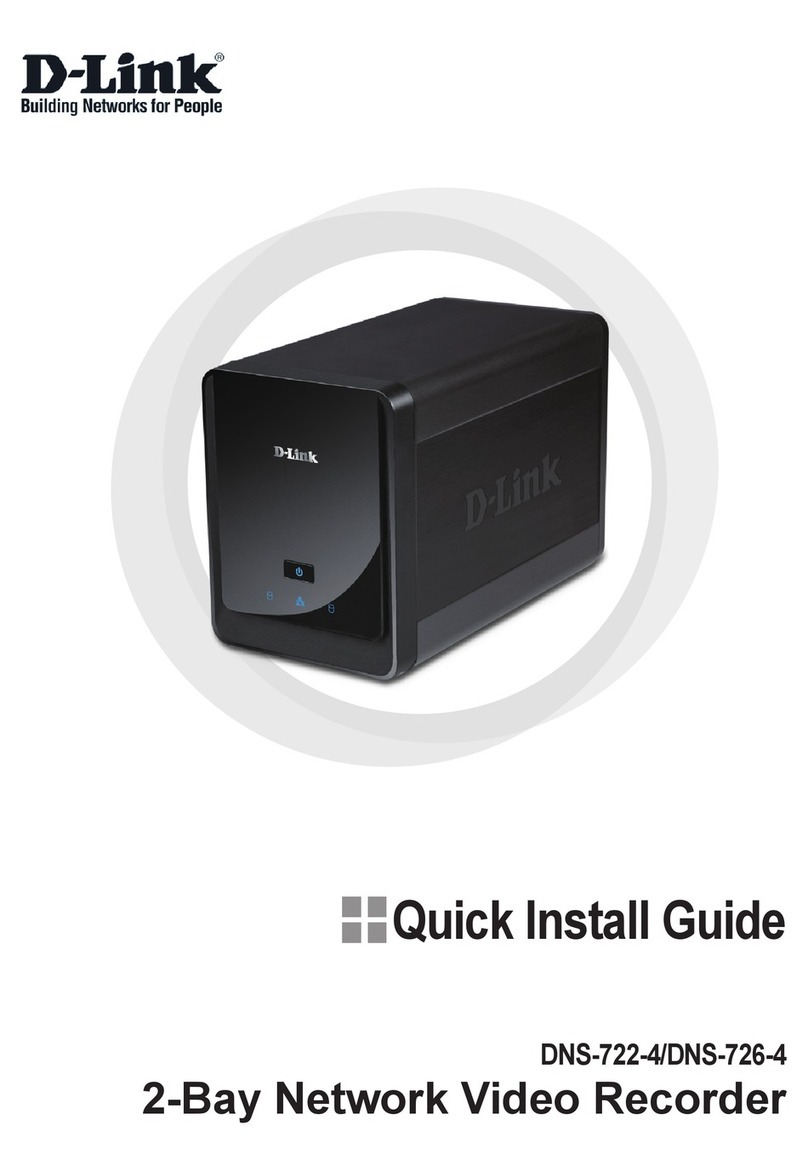Neox PacketRaven User manual

// NEOXPacketRaven
QUICK USER GUIDE
Our SFP TAPs are decoupling elements for the secure and reliable tapping of network data in
optical and copper-based networks. These TAPs are looped into the network line to be moni-
tored and forward the entire data traffic without interruption and without packet loss, while
maintaining data integrity.
Using conventional SPAN ports, also known as mirror ports, on the other hand, can distort the
result, as this copying process works in store-and-forward mode and, for example, discards
FCS/CRC faulty packets on OSI layer 2 instead of providing these Ethernet frames to the secu-
rity or monitoring tool.
Our Network TAPs do not have a MAC or IP address, but work entirely on OSI Layer 1 and cannot
be traced in the network without special and expensive measuring equipment. Hackers and at-
tackers therefore have no chance. As the integrity of the outgoing data remains unaltered due to
this tapping method, our Network TAPs are increasingly used in the areas of network forensics,
security and monitoring.
The great advantage of SFP TAPs is that they can be used extremely flexibly in different network
types and for different media types due to the simple interchangeability of their SFP transcei-
vers.
Furthermore, SFP TAPs work like a data diode and the monitoring ports are physically isolated
from the network ports, which prevents access to the network via the monitoring ports on the
hardware side for security reasons. Therefore, our SFP TAPs guarantee a reliable network ana-
lysis or security investigation without compromise.
To ensure the highest possible reliability, our SFP TAPs have redundant power supplies, but can
also be additionally operated or fused with 12-48V DC voltage.
PacketRaven SFP Network TAPs are designed as portable TAPs, but can also be installed in a
19“ mounting frame in data centres using a mounting kit and support network speeds of 100M
and 1G.
With PacketRaven Network TAPs you get permanent network access without risk and provide
e.g. your monitoring tools with 100% reliable network data - without introducing a single point
of failure.
NEOXPacketRaven 100M/1000M SFP TAP
QUICK USER GUIDE

// NEOXPacketRaven
QUICK USER GUIDE
Data diodes ensure unidirectional communication and ensure
that data traffic can only flow in one direction.
Unidirectional network devices are typically used to ensure in-
formation security or the protection of critical digital systems,
such as industrial control systems or production networks from
cyber attacks.
Our TAPs work like a diode and do not allow access to the net-
work via the monitoring ports for security reasons.
By adding this further layer of security, it is therefore not pos-
sible to compromise the network connection and the productive
network.
2. Data Diode Function
* LLD only works with transceivers that support the „Link Indicator on RX_LOS Pin“!
A B C D F
E
1. More Highlights
• Supports 100Base-FX, 100Base-TX, 1000Base-T, 1000Base-LX, 1000Base-SX and 1000Base-ZX
• Plug-n-Play, no complex configuration necessary
• Data diode function, does not allow access to the network via the monitoring ports
• Very flexible thanks to exchangeable SFP transceivers
• Secure, rock-solid FPGA-based design
• Support for 16k jumbo frames
• Supports Breakout, Aggregation and Regeneration modes
• Mirrors 100% of traffic including FCS/CRC errored packets that may be discarded by discarded by SPANs
• Easy configuration via DIP switches
• Can be powered by redundant AC/DC power supplies (5V) or 12-48V DC
• Designed, assembled, certified and tested in Germany
3. Front View - Ports and LEDs
(A) Link Loss Detection* (LLD) LED (see section 5.1):
LLD detects a non-existent link on one of its net-
work ports and shuts down the other network port
in response.
This state is indicated by the LLD LED lighting up.
(B) SFP Network Ports and Status LEDs
(see section 3.1)
(C) 2 Power LEDs for AC/DC 5V (see section 4.)
It is possible to connect up to 2 power supply units to ensure power supply redundancy.
(D) SFP Monitoring Port and Status LEDs (see section 3.1)
(E) DC Power LED for 12-48V DC (see section 4.)
If power is supplied via the 12-48V DC connection, this LED lights up.
(F) Aggregation mode LED (see section 5.2)
If the Aggregation mode is activated instead of the standard Breakout mode, this LED lights up.

// NEOXPacketRaven
QUICK USER GUIDE
(A) DIP switch for LLD on/off, TAP mode and speed
(see section 5.)
(B) Connection for 12-48V DC voltage
The polarity at the DC connection does not matter, as the TAP
automatically detects the live line and passes the power supply
to the TAP accordingly in the required form!
(C) Redundant connections for 2 AC/DC power supplies (5V)
4. Back view
Link present on all ports;
Left LED lights up permanently in each case
Link and traffic present on all ports;
the left LED lights up continuously
and the right LED flashes.
100M mode
Depending on the configuration of the TAP speed (see section 5.3), the LEDs light up in different combinations.
It must be ensured that all devices connected to the NETWORK port are set to the same network speed when
configuring the TAP speed. This is the only way to ensure smooth and transparent operation of the TAP.
As soon as the TAP displays the desired or configured link speed via the LEDs, proper operation of the TAP
is ensured.
3.1 Front view - meaning of the port LEDs
If an invalid configuration has been selected, all LEDs on the unit light up and the relay switches are not acti-
vated. In this case, switch off the unit and check the DIP switches.
When changing the configuration by means of DIP switches, it is always necessary to perform a restart by
disconnecting the power supply so that the new settings are activated!
As shown in the figure on the left, the first switch
is used as the LLD on/off switch, the second and
third are used to select the operating mode, and the
fourth and fifth are used to select the speed.
The switches numbered 6, 7 and 8 are ignored and
left for future use.
The desired configuration should be set before
plugging in the power cable.
5. Configuration by means of DIP switch
1G mode
At commissioning:
In operation:
With or without SFP transceiver!
For reasons of compatibility and EMC protection, our TAPS may only be operated with the supplied pow-
er supply units certified together with the TAP.
If the TAP is nevertheless operated with power supplies other than those supplied, any warranty claim
that was granted for the TAP will be voided!

// NEOXPacketRaven
QUICK USER GUIDE
5.2 Operating mode configuration
When selecting the operating mode (switches 2 & 3), the configuration is as follows:
• Breakout: Each Ethernet packet transmitted via the network line is mirrored separately in
this mode while maintaining data integrity in the TAP. The send and receive directions are
output separately on the two monitoring ports so that the network traffic can be analysed per
data direction in this case. Another great advantage of the Breakout mode is the visibility of
the network traffic even with a fully loaded network connection. In this mode, the set network
speed is transferred to the monitoring ports.
For example, if the TAP is configured for 100Base-FX, then both monitoring ports will also
communicate on 100Base-FX. Switch value 00
• Aggregation: In this mode, the data streams are bundled and output aggregated on both of
the monitoring ports. This allows you to evaluate the network data of a full duplex line simul-
taneously with a single network interface on your analyzer. Due to the aggregation in hard-
ware (FPGA), faulty packet sequences during recording are a thing of the past in this mode.
For example, you can analyse the entire data traffic aggregated in 100Base-Tx lines without
loss.
The monitoring ports will boot the link with 100Base-FX, 100Base-TX, 1000Base-T, LX, SX or
ZX depending on which speed or speed combination (see section 5.3) is selected for the aggre-
gation mode. Switch value 01
• Regeneration: Regeneration is used to capture 100% full duplex traffic that can be sent to
multiple monitoring devices (up to 3 in this case) for analysis of your network. In this mode, the
network speed settings are synchronised as in Breakout mode and the setting on the DIP switch
is applied to all ports. Switch value 10
5.1 Link Loss Detection (LLD)
Link Loss Detection is a function that checks whether the link has failed on either Network port A or Net-
work port B. If the link has failed on Network port A when LLD is activated, the TAP also shuts down the link
on Network port B, and vice versa.
When the LLD function is selected (switch 1), the configuration is as follows:
• Activate LLD: Switch value 1• Deactivate LLD: Switch value 0
5.3 Speed configuration
In Breakout and Regeneration mode monitoring speed must be the same as networking port speed. In
100Mbit Breakout mode all SFP-s should support either 100Base-T or 100Base-FX, mixing those SFPs is
also supported. In Aggregation mode with 100Mbit passthrough it´s possible to have monitoring in either
100Mbit or 1000Mbit mode. Where in 100Mbit mode there is no packet loss even with 100% speed utilization
on networking ports.
Regeneration Mode
Aggregation ModeBreakout Mode

// NEOXPacketRaven
QUICK USER GUIDE
SFP TAP
Dimensions: 10.60 cm x 3.50 cm x 16.40 cm
Weight: 460g
Consumption: max. 3 Watt at 5V/0.6A
Storage temperature: -40° to 70°C
Operating temperature: 0° to 40°C
Certifications: CE, FCC, RoHS, WEEE, EN55032 KL. A/B, EN55035,
EN61000-3-2, EN61000-3-3, EN61000-6-2
Power Supply
Input voltage: 110V-240V AC 50-60Hz
Output voltage: 5V DC
Output current: 2A
Power: max. 10 Watt
Power plug: with interchangeable plug head
5V Cable with ferrite ring
5V Connector - Screwable hollow plug
- 5.5 mm outer diameter
- 2.1 mm inner diameter
ITEM NO. TAPS & ACCESSORIES
PRP-SSS-1GA 100M/1000M SFP TAP
PRP-1U3 Server rack mounting frame for portable 3 TAPs
PRP-1U3-BP Blank plate for mounting frame PRP-1U3
PRP-PS-INT PSU with EU, UK, and US plug head
PRP-PS-EU Power supply unit with EU plug (head)
PRP-PS-UK Power supply unit with UK plug (head)
PRP-PS-US Power supply unit with US plug (head)
PRP-PS-*-A Plug head *EU, *UK or *US
PRP-1U3
PRP-1U3-BP
PRP-SSS-1GA
8. Item numbers - TAPs & Accessories
7. Technical specifications
Network: 100Base-FX/TX (100Mbit)
Monitoring: 1000Base-LX/SX/ZX/T (1Gbit)
Switch value 00 or 11
Network: 100Base-FX/TX (100Mbit)
Monitoring: 100Base-FX/TX (100Mbit)
Switch value 01
Network: 1000Base-LX/SX/ZX/T (1Gbit)
Monitoring: 1000Base-LX/SX/ZX/T (1Gbit)
Switch value 10
or
Aggregation Mode:
The following constellation results for the speed selection (switches 4 & 5):
Breakout Mode: Network & Monitoring:
100Base-FX/TX (100Mbit)
Switch value 01
Network & Monitoring:
1000Base-LX/SX/ZX/T (1Gbit)
Switch value 10
6. SFP-Transceiver
The NEOXPacketRaven SFP TAP basically supports all MSA-compliant SFP transceivers.
Please note that the TAP may have to be restarted after replacing a transceiver!
A list of transceivers that have been explicitly tested can be found at:
https://www.neox-networks.com/sfp-tap-transceiver-en

NEOX NETWORKS GmbH
Monzastr. 4 · D-63225 Langen · Germany
+49 6103 / 37 215 910
solutions@neox-networks.com · www.neox-networks.com
// NEOXPacketSolutions
PRODUCT OVERVIEW
Portable & Compact PACKET CAPTURE Appliances
High-End NETWORK PACKET BROKER for up to 400G
Modular & Scalable PACKET CAPTURE Solution
Cost-Efficient Next-Gen NETWORK PACKET BROKER
as Appliance or Virtual
Modular, Portable and Virtual NETWORK TAPS for up to 400G
Advanced PACKET PROCESSING up to 400Gbps
Table of contents
Other Neox Network Hardware manuals
Popular Network Hardware manuals by other brands
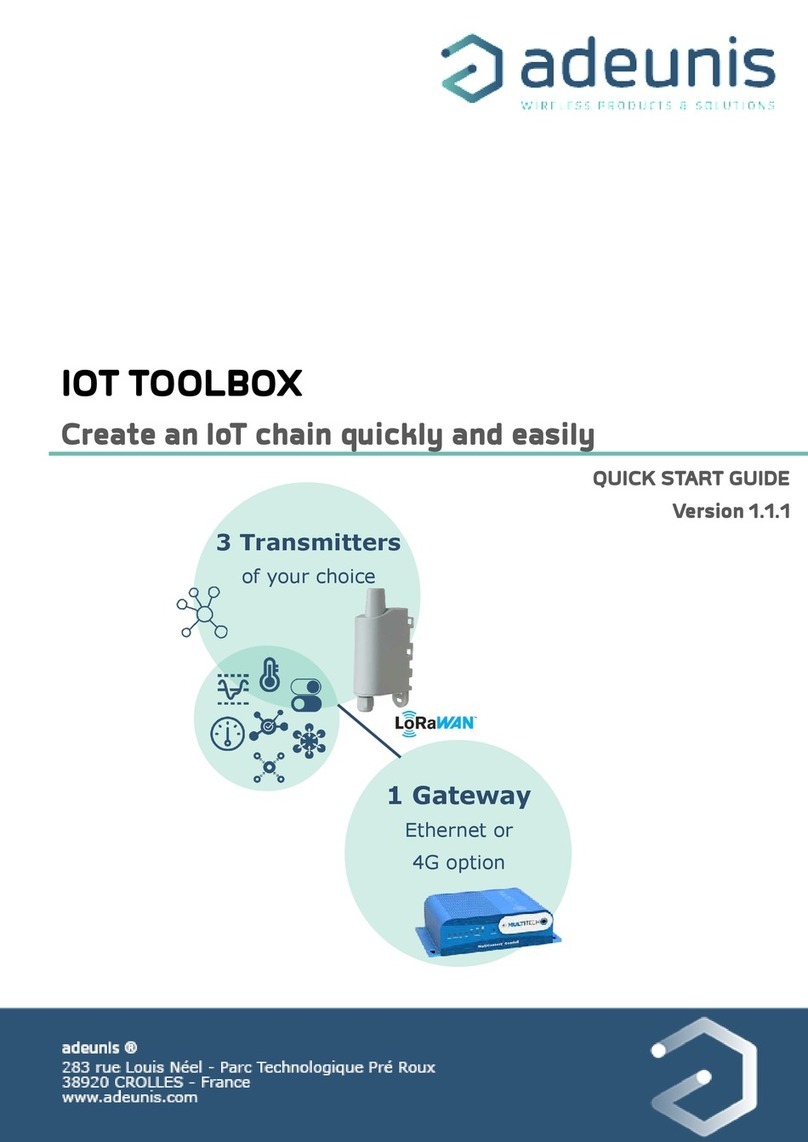
Adeunis RF
Adeunis RF IOT TOOLBOX BUNDLE ETHERNET quick start guide
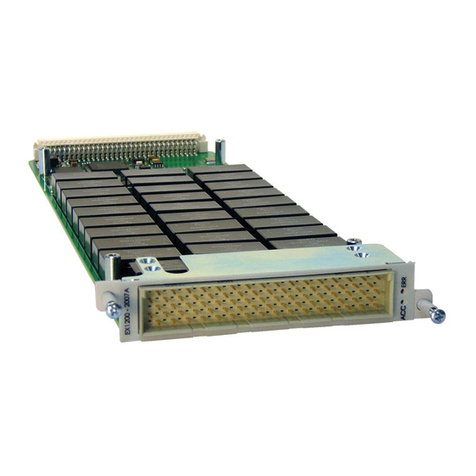
VTI Instruments
VTI Instruments EX1200 Series user manual
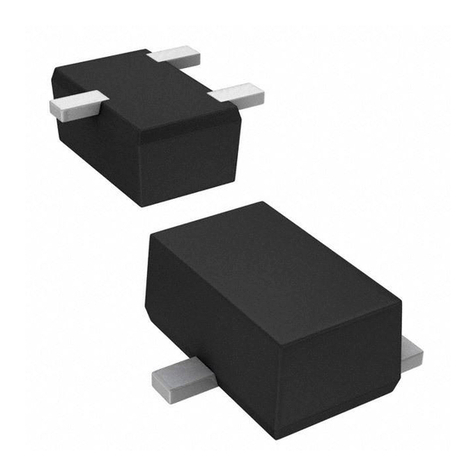
Panasonic
Panasonic Schottky Barrier Diodes MA3J7440G Specifications
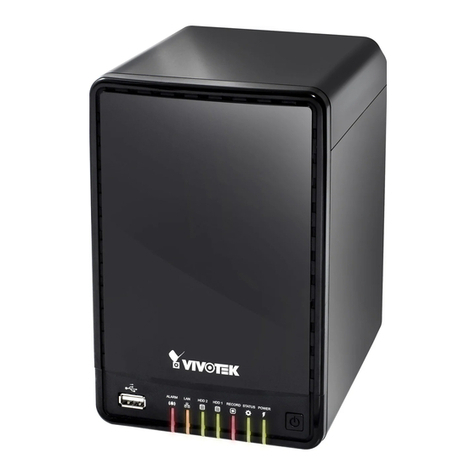
Vivotek
Vivotek ND8321N user manual
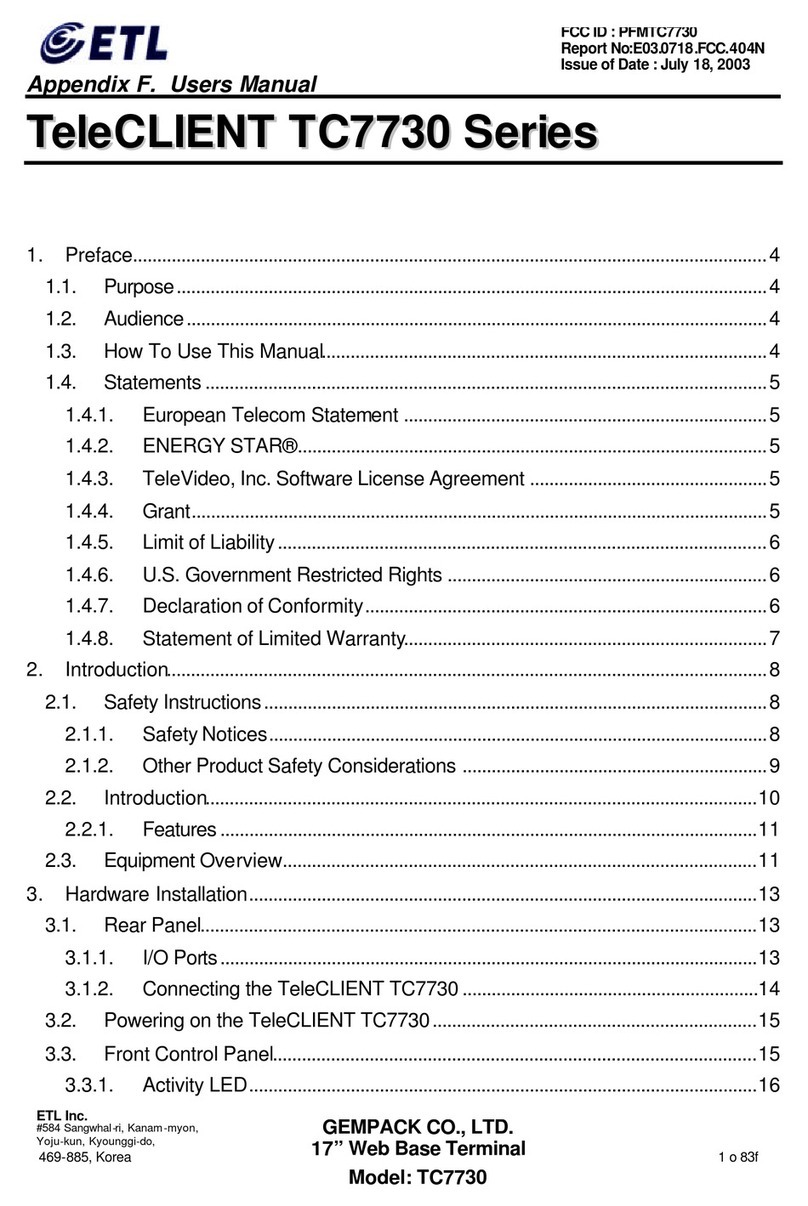
ETL
ETL TeleCLIENT TC7730 Series user manual

WIN Enterprises
WIN Enterprises PL-10390 user manual
